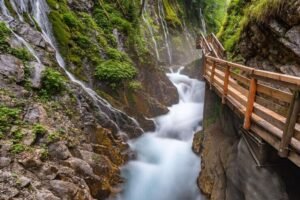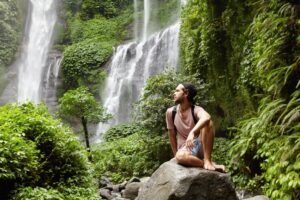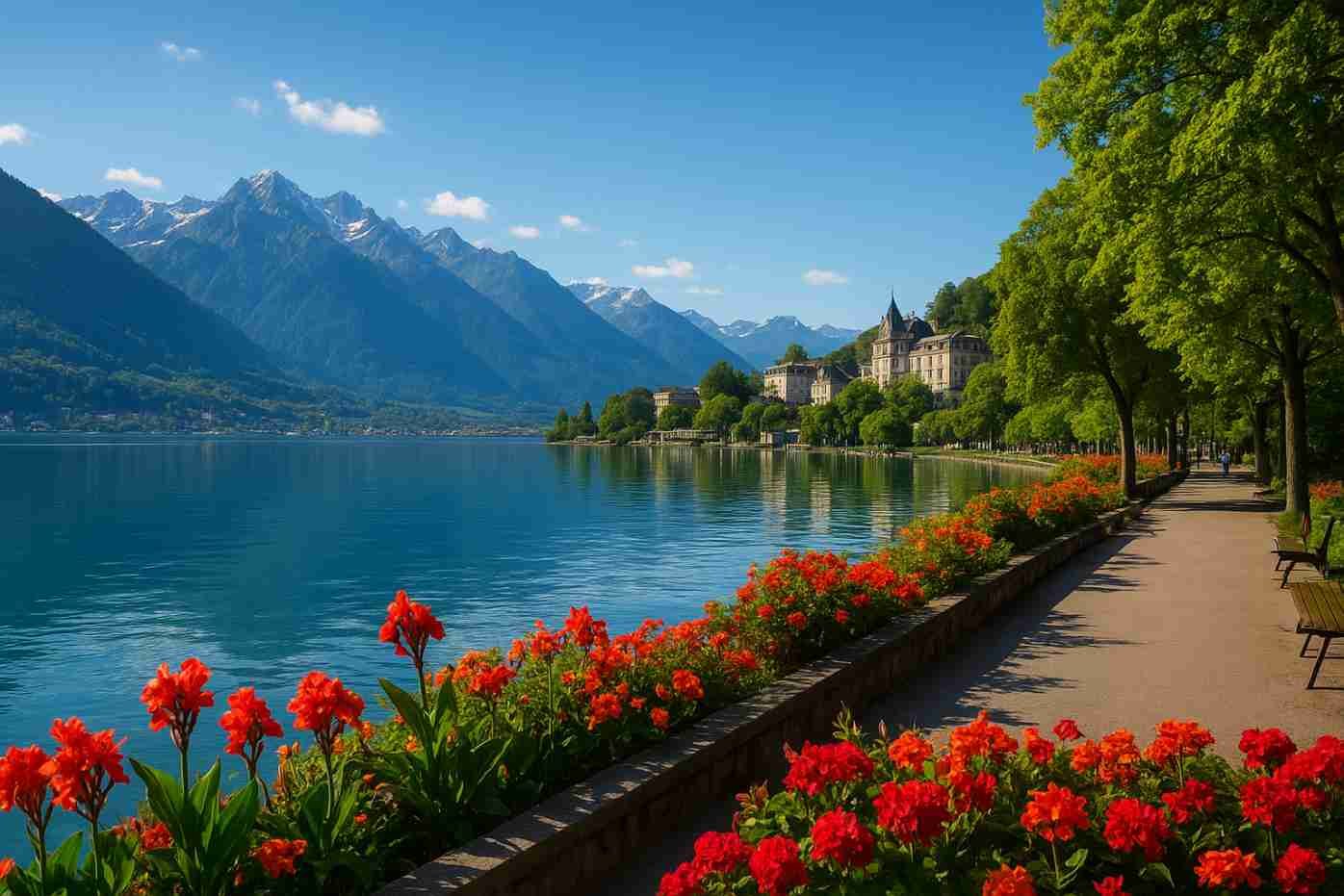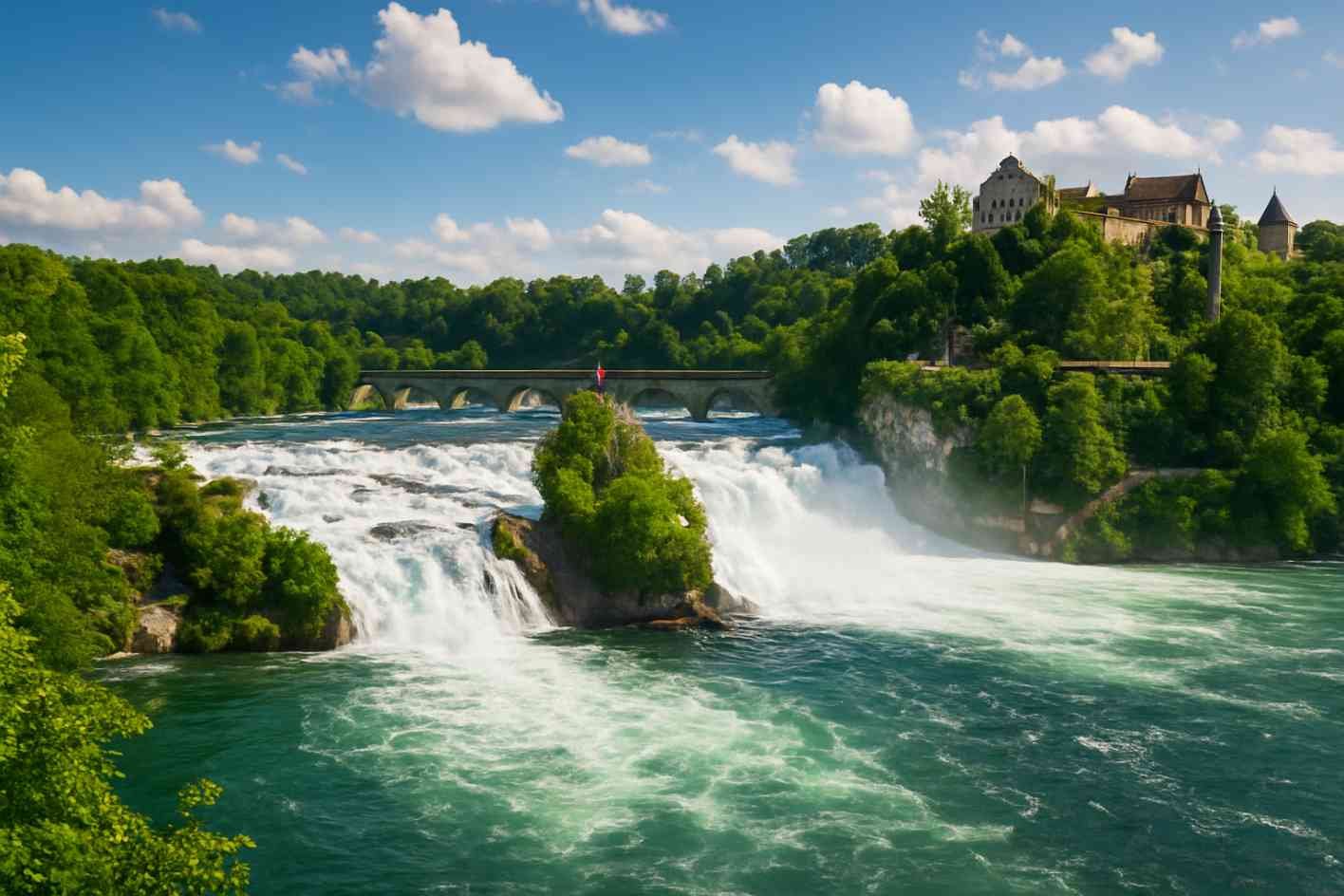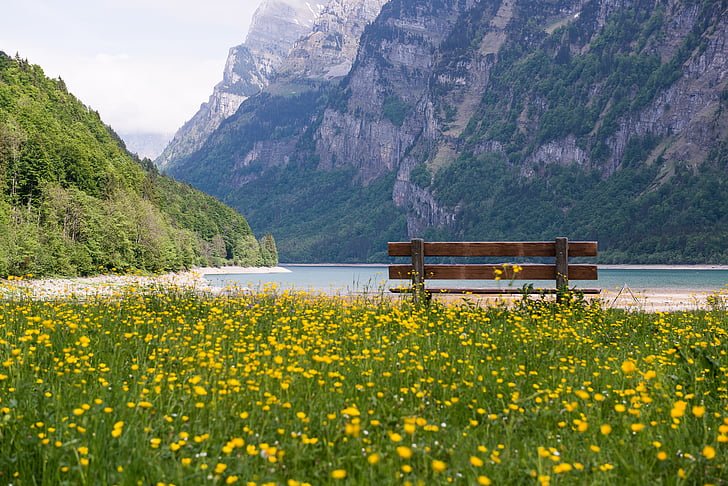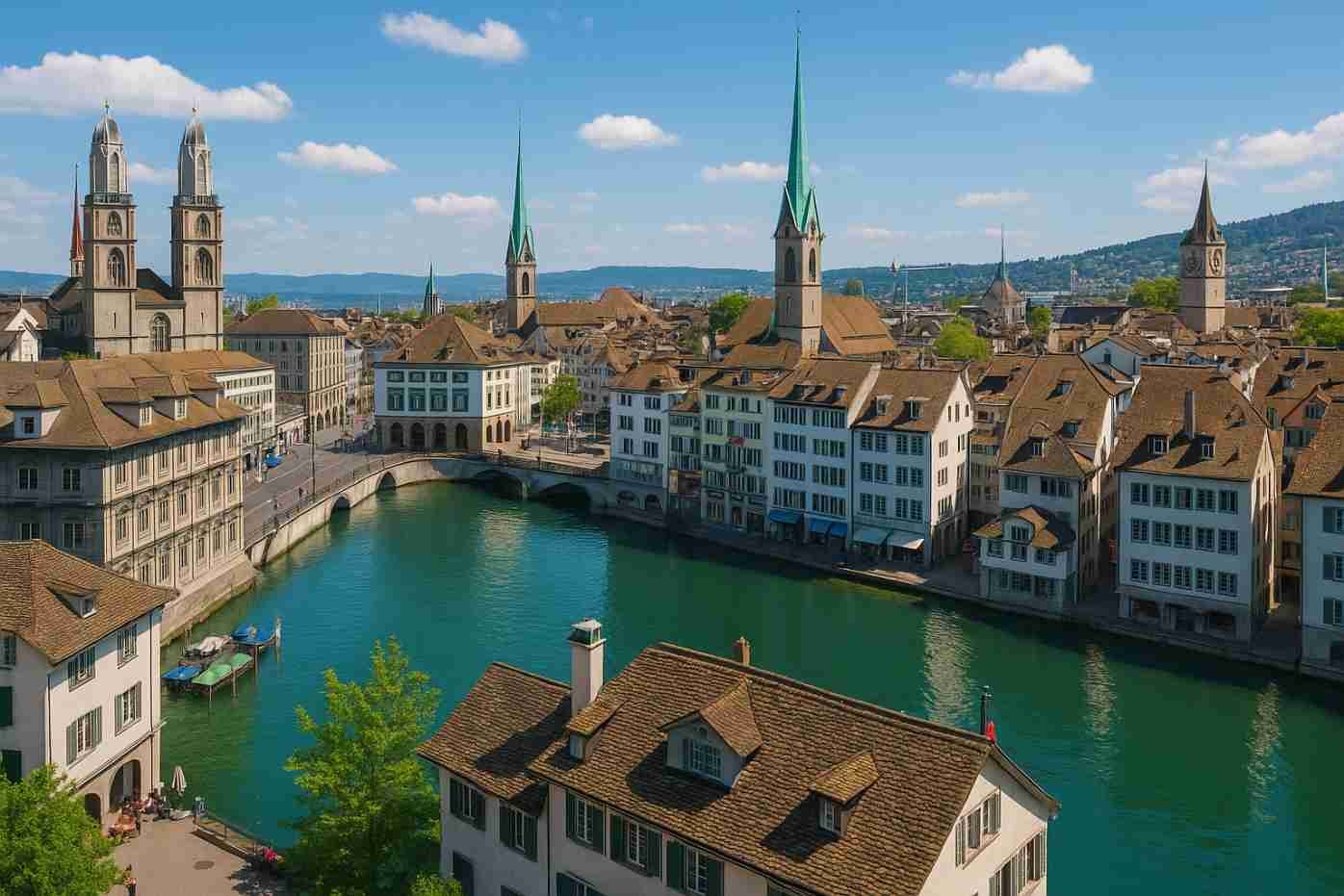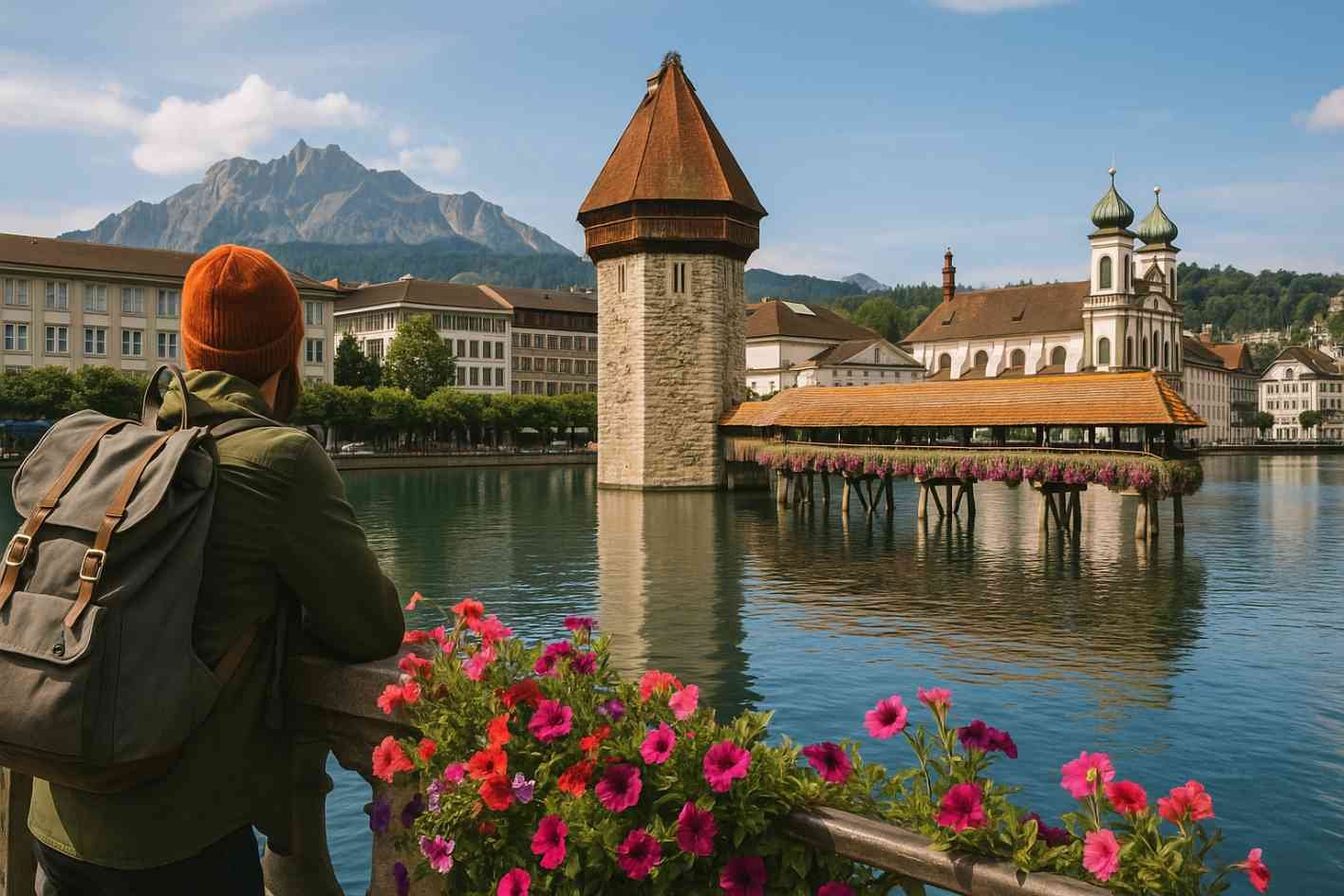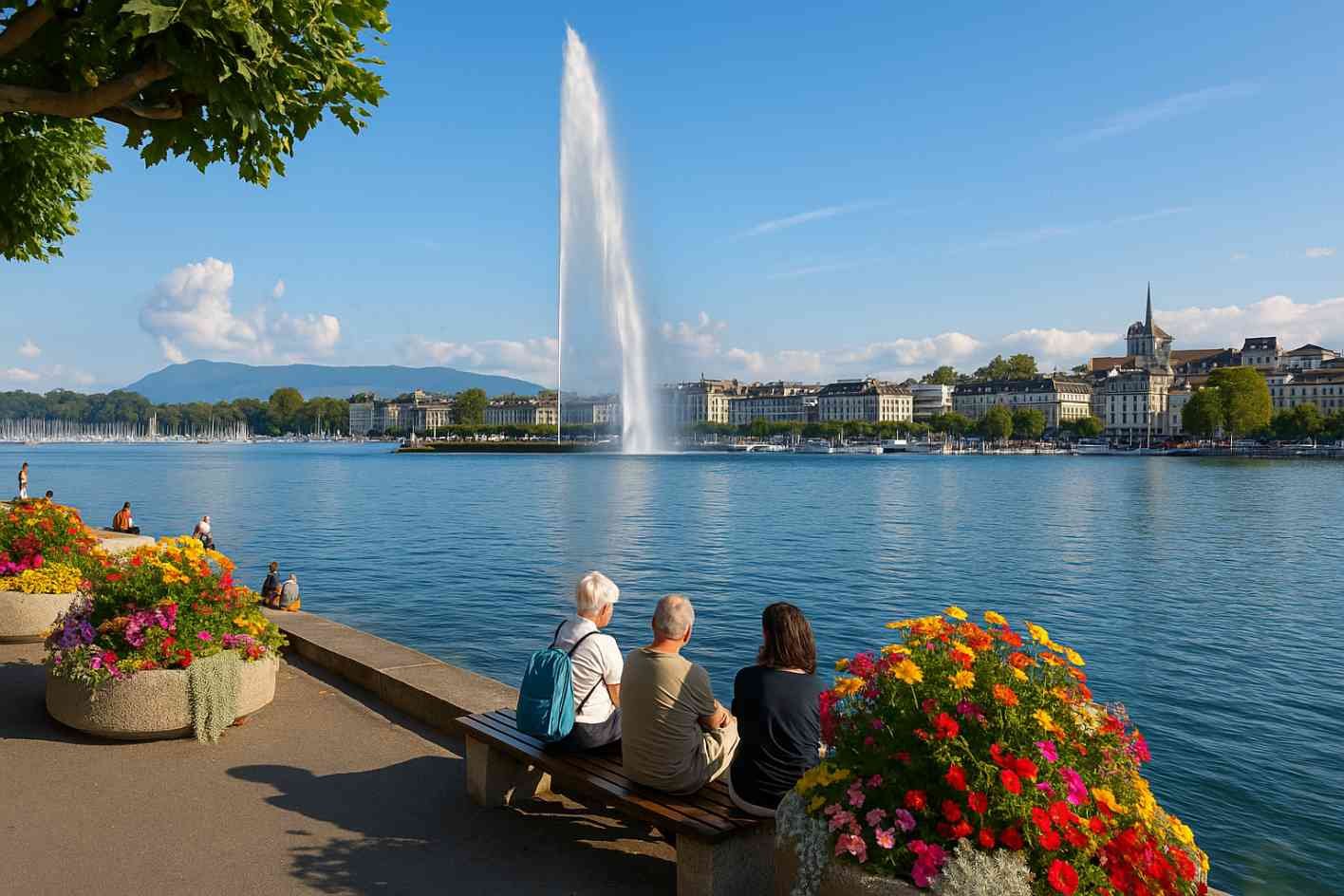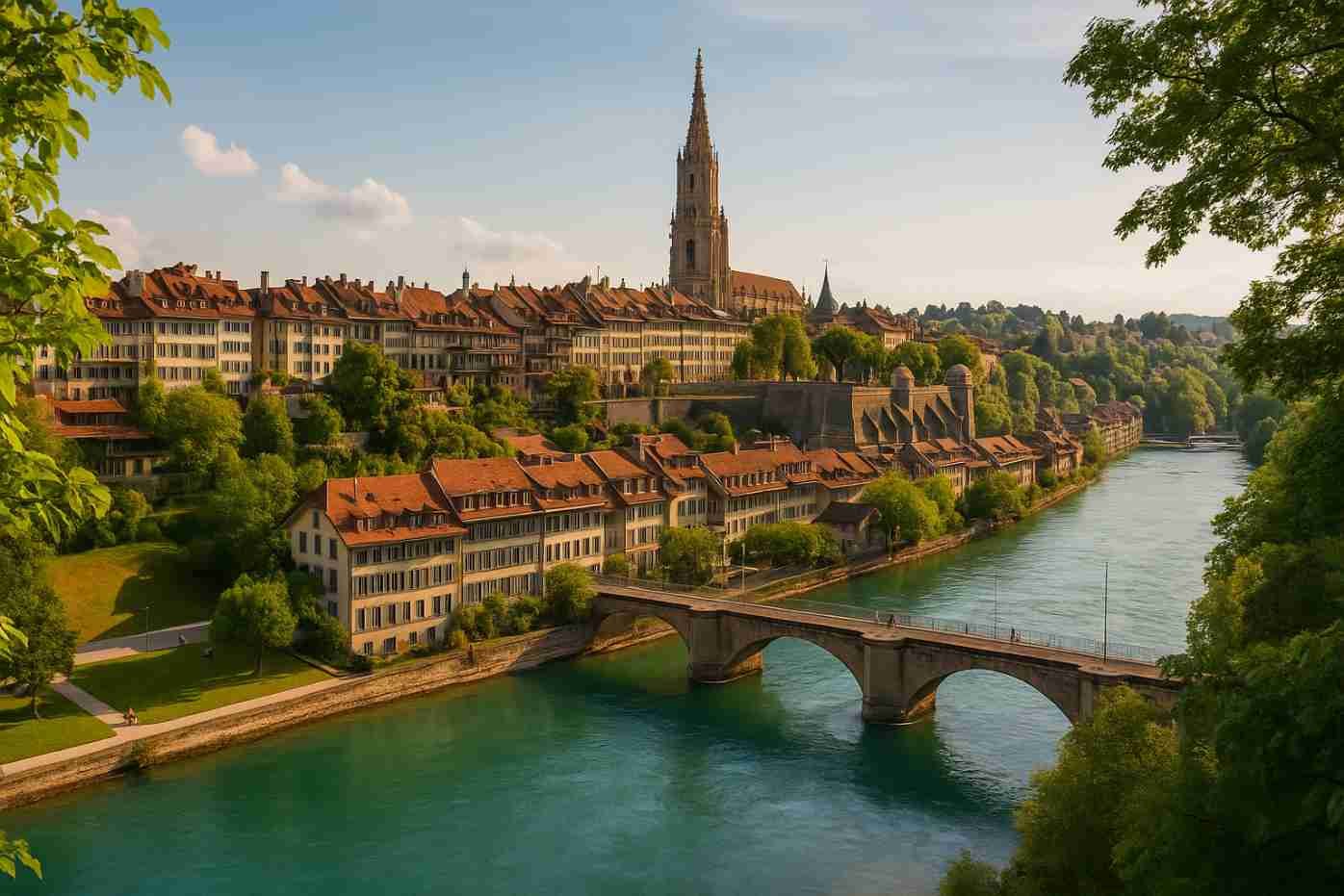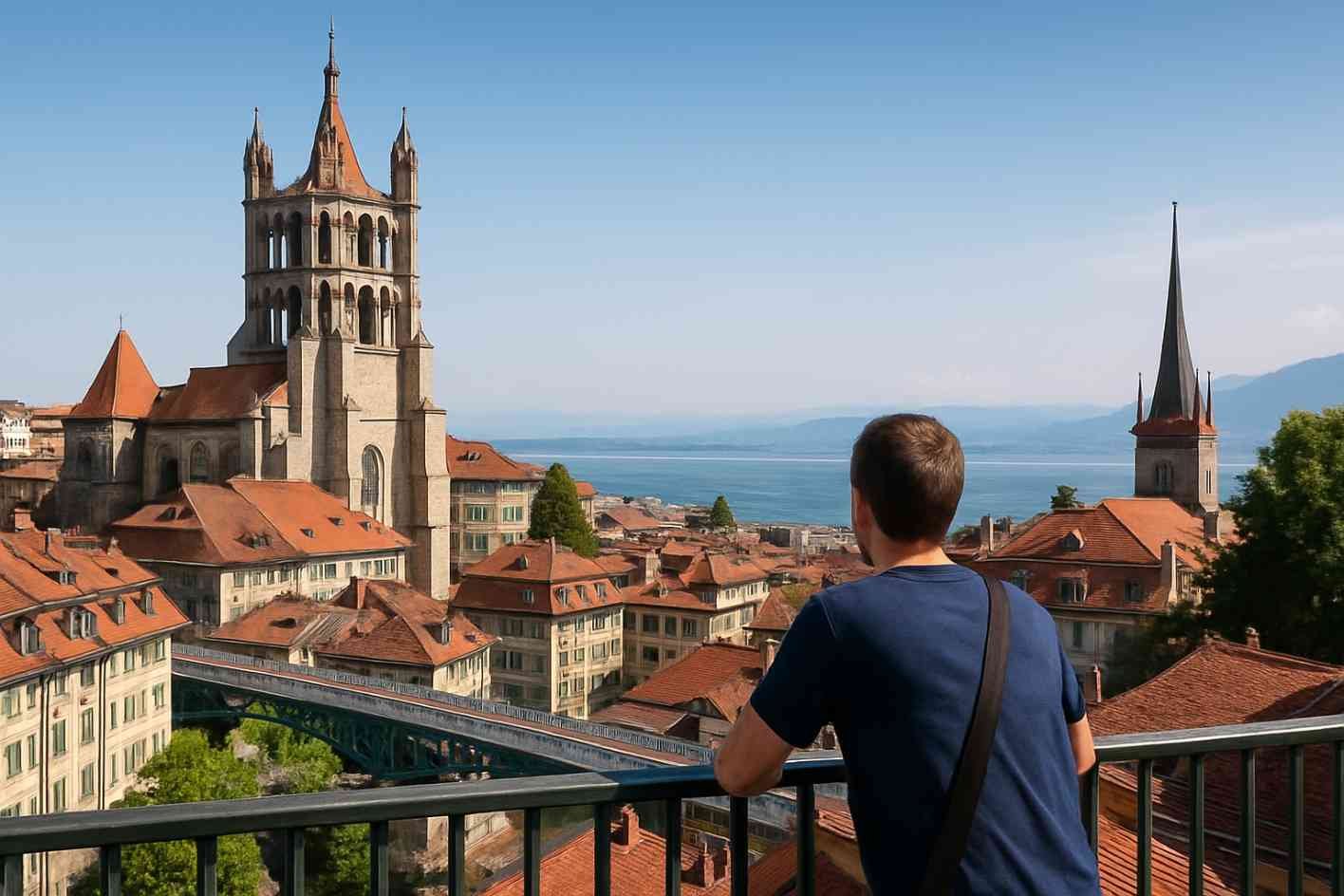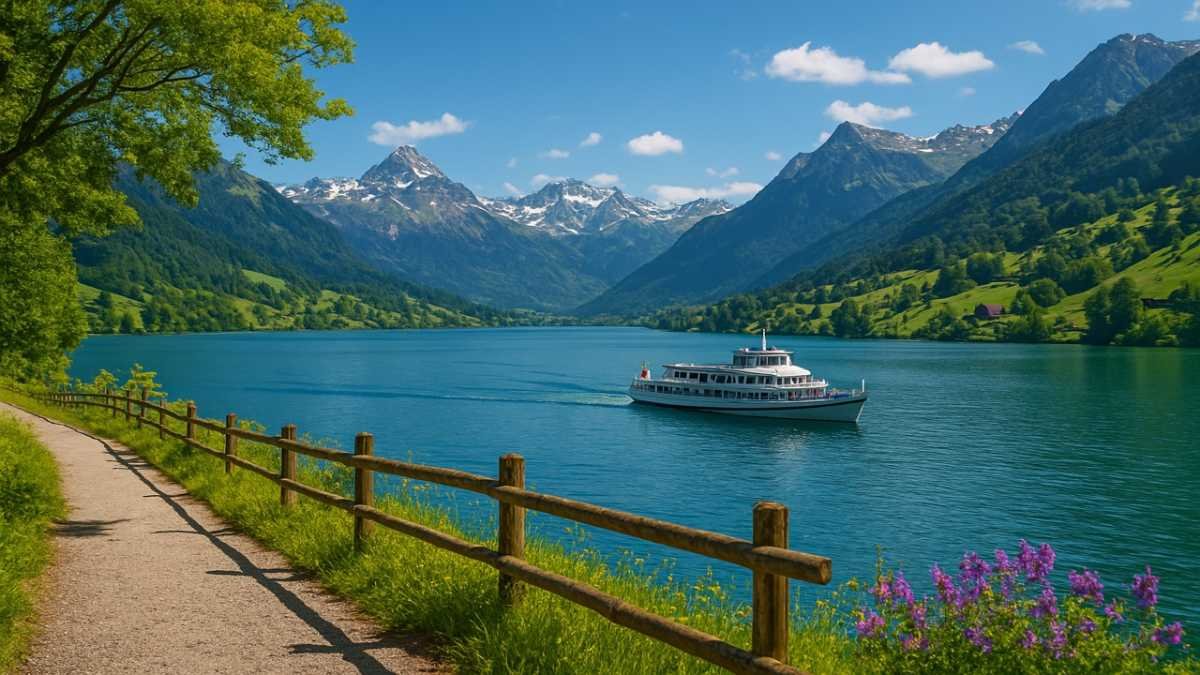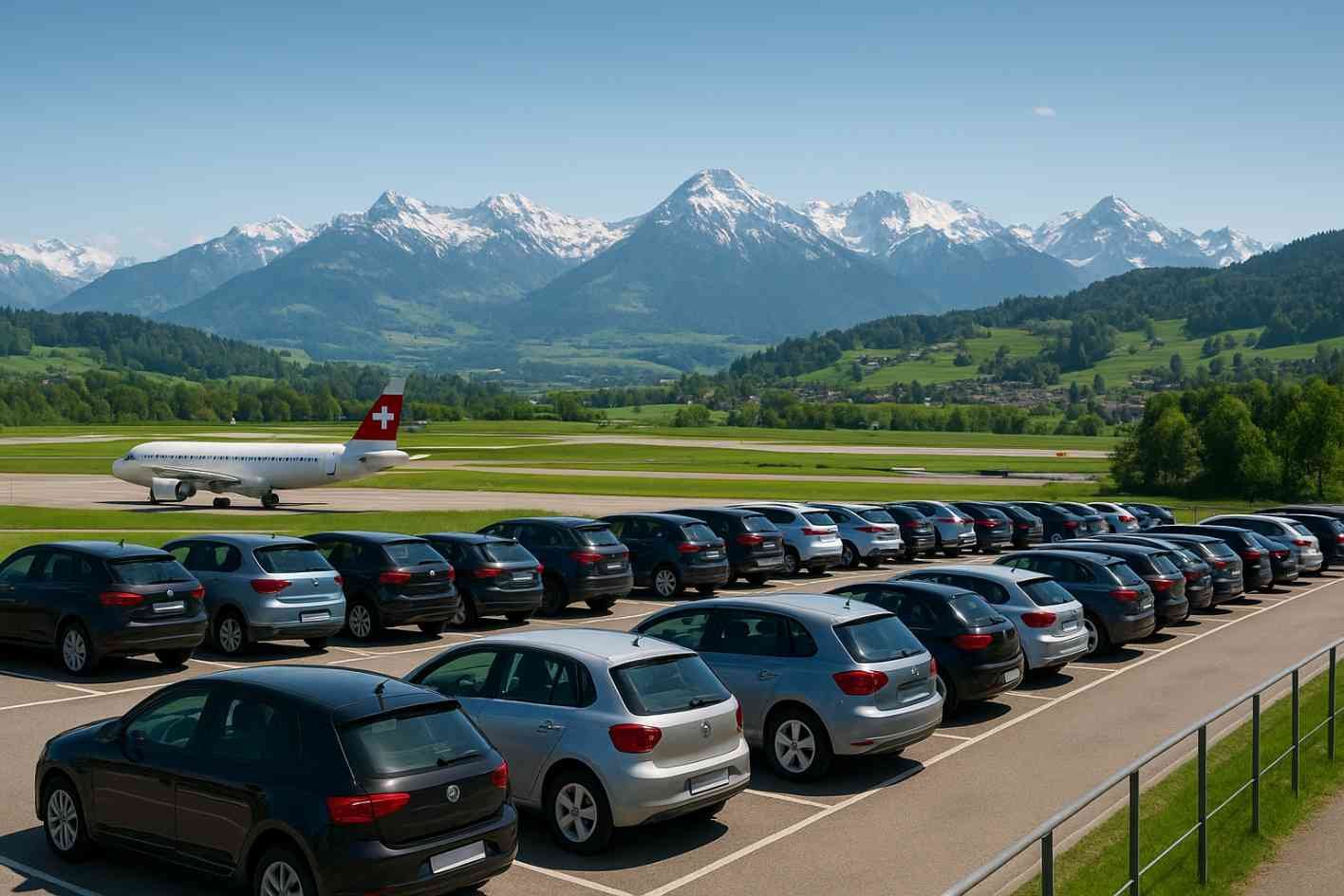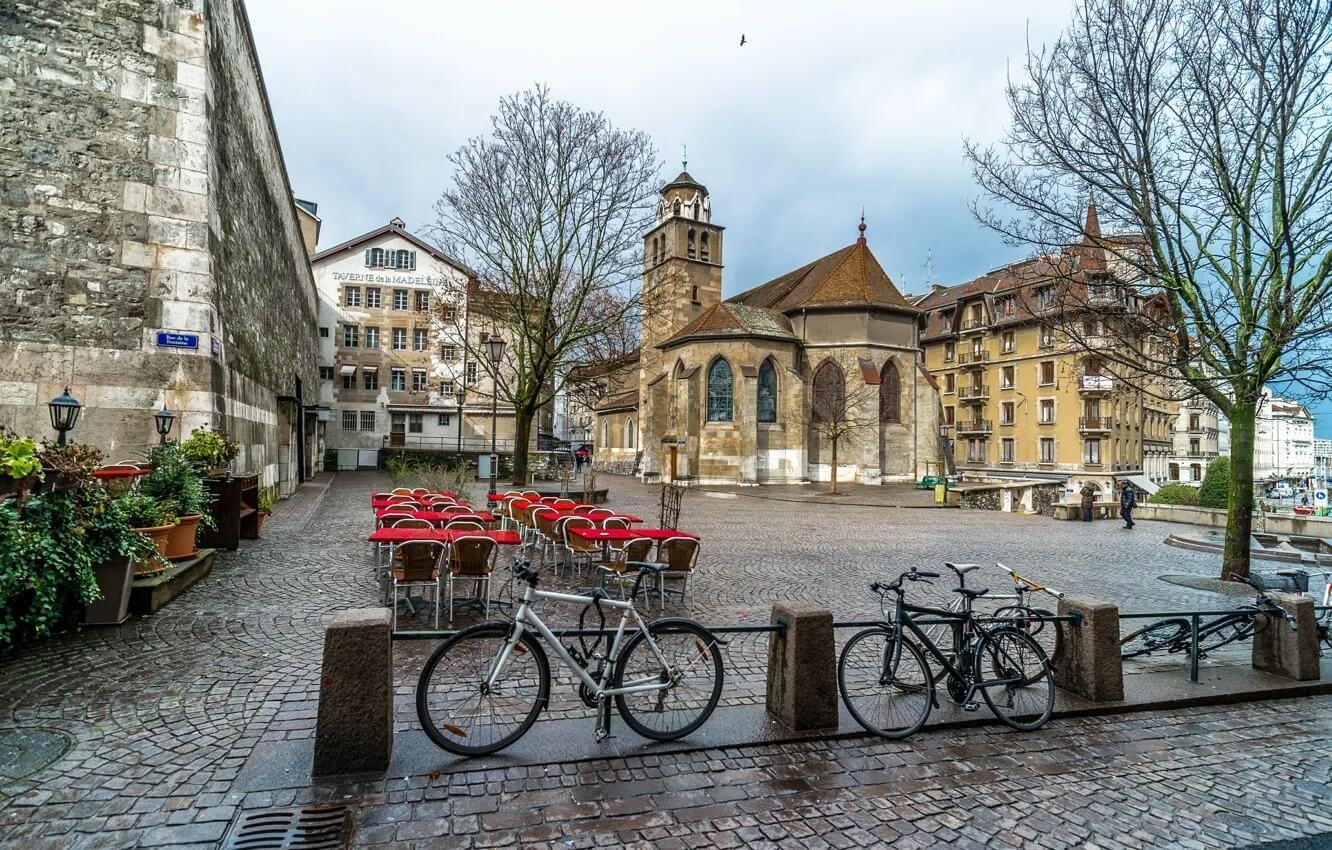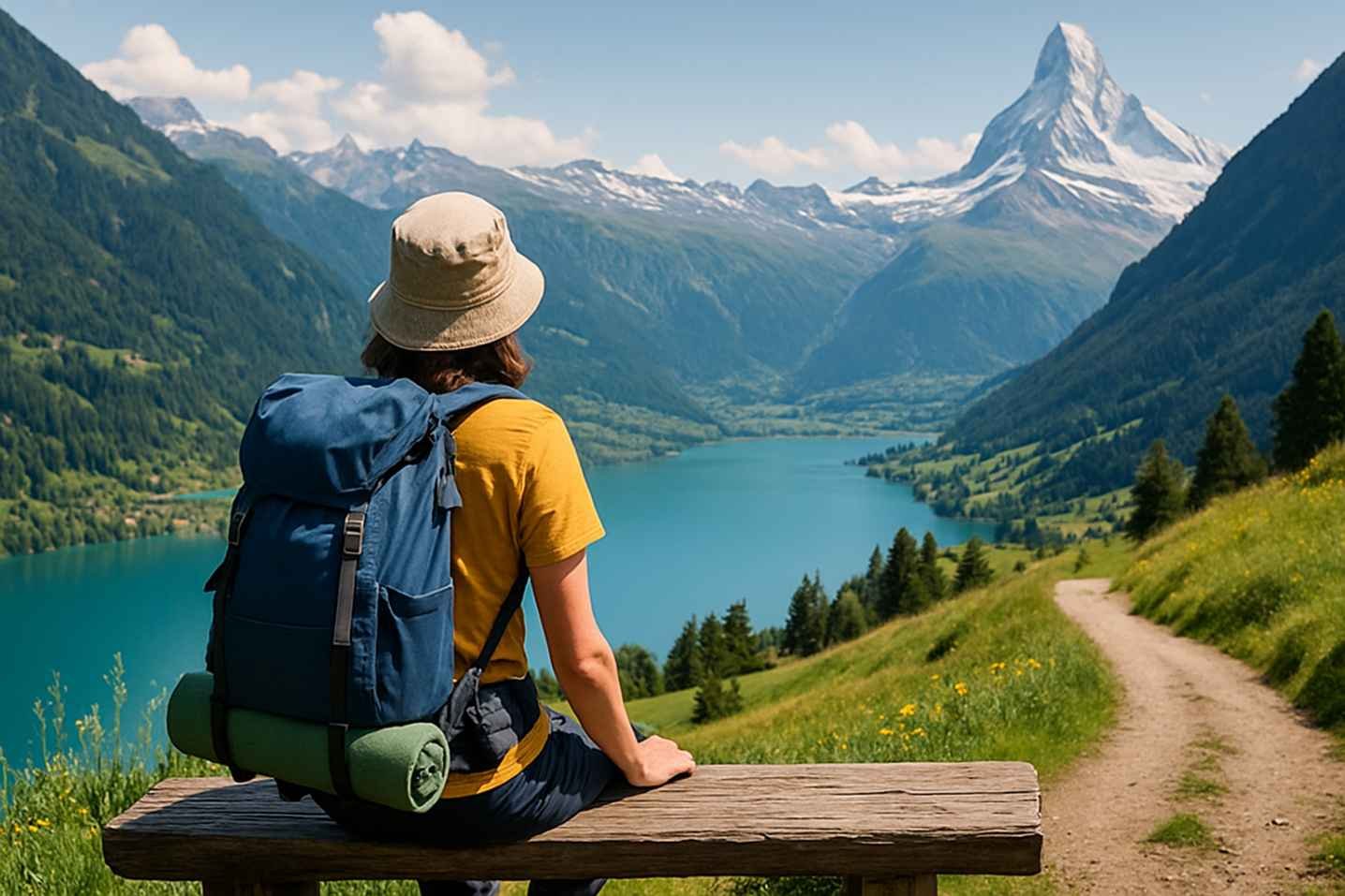Imagine standing at the foot of a towering waterfall, watching as crystal-clear waters cascade over cliffs, included by extravagant green forests and the wonderful Swiss Alps. This direct will take you through the best waterfalls in Switzerland, I will share my individual encounter with you.
I’ll never disregard my to begin with trip to the Staubbach Falls in Lauterbrunnen. The sheer stature and control of the falls were mesmerizing, but what made the encounter indeed more important was knowing that Switzerland’s endeavors toward maintainable tourism are making a difference to protect this common ponder for future eras. Here, we’ll plunge into the best waterfalls in Switzerland and investigate eco-friendly ways to encounter them.
What Makes Swiss Waterfalls So Special?
The Topographical Ponders Behind Swiss Waterfalls
Swiss waterfalls are a item of the country’s special snow capped scene, where frosty waterways and mountain streams carve ways through sensational cliffs and valleys. A few falls, like the Rhine Falls, are among the biggest in Europe, whereas others, like Foroglio Falls in Ticino, are disengaged diamonds. The differing qualities of waterfalls in Switzerland offers something for each kind of traveler, from easy-access perspectives to courageous hikes.
Importance of Sustainability
Many of these waterfalls are found in delicate environmental zones, requiring endeavors to protect the common environment. Switzerland has actualized feasible tourism hones to guarantee that guests can appreciate these attractions whereas minimizing their natural affect. From utilizing renewable vitality sources to empowering eco-friendly transportation, the nation remains committed to securing its common treasures.
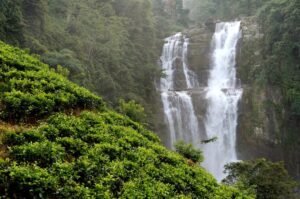
Switzerland’s Best Waterfalls: An Ultimate Guide
1. Rhine Falls (Rheinfall)
Location: Near Schaffhausen
Height: 23 meters
Best Time to Visit: June to Admirable, when the stream is at its peak
Rhine Falls, Europe’s biggest waterfall by volume, offers a emotional encounter. It extends over 150 meters wide and can be experienced up near by vessel or from different seeing stages. For maintainable travel, the location is available by Swiss Rail, making it simple to minimize your carbon footprint.
Eco-Friendly Exercises: Take a solar-powered pontoon visit to investigate the falls up near. These pontoons minimize natural affect, advertising a special and maintainable way to see the falls.
Nearby Housing: Remain at Eco-hotel Linde in Schaffhausen, which is known for its green hones and vicinity to open transport, making it perfect for travelers sharp on lessening their natural footprint.
Personal Tip: The all encompassing seeing stage gives the best photo openings, and I prescribe going by early in the morning to avoid swarms and capture the dazzling dawn over the falls.
2. Trümmelbach Falls
Location: Lauterbrunnen Valley
Height: 200 meters (partitioned into 10 cascades)
Best Time to Visit: Late spring to early autumn
Hidden inside the Lauterbrunnen Valley, frequently called the “Valley of 72 Waterfalls,” Trümmelbach Falls is a arrangement of 10 glacier-fed waterfalls inside a mountain. These falls are a uncommon locate, as they are the as it were open underground ice sheet waterfalls in Europe.
Sustainable Highlights: Trümmelbach Falls is fueled by renewable vitality, and passage expenses contribute to its conservation.
Nearby Lodging: The Valley Hostel in Lauterbrunnen is an eco-friendly alternative, decreasing squander and advertising shared offices to minimize vitality usage.
The control of these underground falls is mesmerizing but be arranged for the commotion and fog. Investigating the underground burrows is both exciting and lowering, appearing the crude control of nature.
3. Staubbach Falls
Location: Lauterbrunnen Valley
Height: 297 meters
Best Time to Visit: Spring and early summer, when snowmelt increments flow
The Staubbach Falls is Switzerland’s second-highest waterfall, dropping about 300 meters off a cliff. It is frequently compared to a cloak of fog, consequently its title “Staub,” which implies tidy. Staubbach Falls is especially amazing amid spring when snowmelt increments the water flow.
Eco-Friendly Get to: The falls are found inside strolling remove of Lauterbrunnen town, which can be gotten to by prepare from Interlaken.
Nearby Housing: Hotel Silberhorn in Lauterbrunnen is committed to feasible hones, counting energy-efficient frameworks and a waste-reduction program.
During a summer visit, I was flabbergasted by the way Staubbach appeared to alter colors in the daylight. Climbing up to the perspective, you can feel the reviving fog on your confront, a welcome help after the ascent.
4. Giessbach Falls
Location: Brienz
Height: 500 meters (14 tiers)
Best Time to Visit: Year-round, though spring offers the most water volume
One of the most lovely layered waterfalls in Switzerland, Giessbach Falls is set against the scenery of Lake Brienz. The waterfall streams in 14 diverse levels down the mountain, and a arrange of ways permits guests to investigate each level.
Sustainable Travel Tips: Take a ship from Brienz to Giessbach for a beautiful and eco-friendly arrival.
Eco-Friendly Remain: Grandhotel Giessbach is a legacy lodging that joins maintainability into its operations, with negligible squander, energy-saving innovations, and locally sourced food.
The normal excellence here is strange, and strolling along the winding trails with the sound of cascading water makes for an charming encounter. The perspective at the beat offers a all encompassing see of Lake Brienz that is worth the effort.
5. Reichenbach Falls
Location: Meiringen
Height: 250 meters
Best Time to Visit: May to October
Famously known as the area of Sherlock Holmes’ gathered passing, Reichenbach Falls holds a critical put in both scholarly history and Swiss tourism. The sensational cascade of the falls makes it a breathtaking sight.
Eco-Friendly Get to: Take the Reichenbach Funicular, which minimizes the affect on the environment and is a fun way to reach the top.
Sustainable Settlement: Hotel Victoria in Meiringen is a family-owned eco-hotel that prioritizes maintainable hones and is found near to open transport.
Personal Note: Standing on the stage neglecting Reichenbach, it’s simple to see why it captivated Sir Arthur Conan Doyle. The control of the waterfall and the cliffs make an strongly environment that transports you back to Holmes’ time.
6. Foroglio Falls
Location: Bavona Valley, Ticino
Height: 80 meters
Best Time to Visit: Spring and autumn
Located in the beautiful Bavona Valley, Foroglio Falls is a covered up diamond that grandstands the untouched magnificence of Ticino. The waterfall drops significantly into a forested range, making a quiet setting that feels like a step back in time.
Eco-Friendly Travel: Utilize the Swiss Travel Pass to get to open transportation all through the Ticino locale, supporting Switzerland’s open transport network.
Nearby Green Stay: The Agriturismo La Finca close Locarno is an eco-friendly convenience that takes after economical cultivating hones and offers visitors a chance to encounter nearby Ticino culture.
The provincial charm of Foroglio town, with its stone houses and peaceful climate, includes to the enchantment of the falls. Climbing here, encompassed by nature and distant from city commotion, offers a genuine escape.
7. Engstligen Falls
Location: Adelboden
Height: 600 meters (in two stages)
Best Time to Visit: Early summer
Engstligen Falls, a lesser-known however awe-inspiring cascade, offers guests an remarkable see over two stages. These falls are especially well known with climbers and are one of Switzerland’s most elevated waterfalls.
Green Exercises: Climb the well-maintained trails to the best, which permits for an eco-friendly way to investigate the falls without causing natural disruption.
Sustainable Lodging: The Cambrian in Adelboden is a extravagance eco-friendly lodging committed to lessening squander, moderating vitality, and sourcing nourishment locally.
Personal Suggestion: Climb up early in the morning to dodge swarms and witness the dawn lighting up the falls. It’s an elating encounter that’s well worth the effort.
8. Rhine Falls (Schaffhausen)
Height: 23 meters
Width: 150 meters
Best Time to Visit: June to Admirable for the most elevated water levels
Eco-Friendly Tip: Reach Rhine Falls by prepare to minimize carbon emissions
The Rhine Falls, Europe’s biggest waterfall, is an amazing locate with thundering waters that pull in millions of guests yearly. Found close Schaffhausen, it offers pontoon visits that take you near to the falls, giving an immersive experience.
During my visit to Rhine Falls, the sheer volume of water and fog in the discuss was elating. Choosing to travel by prepare permitted me to appreciate the picturesque course whereas diminishing my carbon impression. If you’re going to, consider an eco-friendly watercraft visit fueled by electric motors to assist bolster economical practices.
9. Staubbach Falls (Lauterbrunnen Valley)
Height: 297 meters
Best Time to Visit: Spring and early summer when snowmelt increments water flow
Eco-Friendly Tip: Pick for strolling or cycling ways in Lauterbrunnen Valley to investigate different falls sustainably.
Staubbach Falls is one of the most essential free-falling waterfalls in Europe and is found in the pleasant Lauterbrunnen Valley. This waterfall spurred essayist Johann Wolfgang von Goethe, and it’s straightforward to see why—the falls cascade down a sheer cliff, making a fine mist.
Lauterbrunnen Valley’s 72 waterfalls offer a calm evade from dynamic city life. On my last visit, I rented an electric bike, which allowed me to experience the valley in an eco-conscious way though getting a charge out of breathtaking sees of Staubbach Falls and adjoining attractions like Trümmelbach Falls.
10. Trümmelbach Falls (Lauterbrunnen Valley)
Height: Arrangement of ten glacier-fed waterfalls interior a mountain
Best Time to Visit: Summer
Eco-Friendly Tip: Buy tickets in progress to decrease line times and swarm congestion.
Trümmelbach Falls is a interesting arrangement of waterfalls covered up interior a mountain in Lauterbrunnen Valley. The capable glacier-fed streams from the Eiger, Mönch, and Jungfrau crests make this a must-see. Trümmelbach is the as it were open underground waterfall in Europe, making it genuinely special.
Visiting Trümmelbach was like venturing into another world. The sound of the hurrying water resounding interior the mountain was exciting, and the perception stages offer sees of the cascading falls that you won’t see anyplace else. I prescribe going by early in the morning to appreciate a calmer, more hint involvement with nature.
11. Foroglio Falls (Val Bavona, Ticino)
Height: 80 meters
Best Time to Visit: Spring and early summer
Eco-Friendly Tip: Bolster neighborhood businesses in the little town of Foroglio by eating at maintainable eateries that source fixings locally.
Foroglio Falls a covered up pearl found in the inaccessible Bavona Valley in the Italian-speaking locale of Ticino. This fabulous waterfall cascades from a towering cliff, encompassed by lavish greenery and elevated vegetation. The little town of Foroglio, with its conventional stone houses, includes to the charm.
I went through an whole day investigating Foroglio, and the tranquil vibe of the region was exceptional. Since the town is little, I suggest supporting neighborhood businesses, which contribute to maintainable tourism in the locale.
12. Reichenbach Falls (Meiringen)
Height: 250 meters
Best Time to Visit: May to September
Eco-Friendly Tip: Utilize the Reichenbach Funicular to get to the falls, as it works on maintainable practices.
Famous for its association to Sir Arthur Conan Doyle’s Sherlock Holmes, Reichenbach Falls is a breathtaking cascade with scholarly centrality. The falls dive significantly over a cliff, advertising a emotional setting perfect for photo devotees and scholarly fans alike.
Visiting Reichenbach Falls was a strange encounter as a fan of Sherlock Holmes. The funicular ride up to the falls was not as it were picturesque but too ecologically neighborly, adjusting with Switzerland’s commitment to maintainable tourism.
Travel Tips for Visiting Swiss Waterfalls Sustainably
Use Public Transport: Numerous Swiss waterfalls are open through the country’s broad open transportation framework, counting trains, buses, and indeed funiculars. This diminishes your carbon footprint.
Bring Reusable Items: Pack a reusable water bottle, utensils, and packs to minimize squander. Numerous Swiss towns have clean, characteristic water sources where you can refill bottles.
Respect Nature: Remain on stamped ways to ensure delicate biological systems around the waterfalls. Dodge picking plants or exasperating wildlife.
Choose Eco-Friendly Accommodations: Select for hotels and lodges that prioritize maintainable hones. Switzerland has a wide run of eco-certified accommodations, particularly around prevalent normal attractions.
Support Neighborhood Businesses: Buy nourishment, trinkets, and other things from nearby sellers to contribute to the nearby economy sustainably.
Sustainable Lodging Alternatives Nearby
Many eco-friendly accommodations are accessible close Switzerland’s best waterfalls:
Eco-Chalets in Lauterbrunnen Valley: These properties are prepared with energy-efficient apparatuses and low-impact materials, giving maintainable lodging for eco-conscious travelers.
Bio Hotels in Ticino: These inns emphasize natural materials, locally sourced nourishment, and water preservation efforts.
Sustainable Hostels: For budget-conscious travelers, a few lodgings all through Switzerland have received feasible hones, counting renewable vitality and zero-waste policies.
Example: I remained at a chalet in Lauterbrunnen with sun powered warming, which given a cozy air whereas decreasing natural affect. Numerous properties in Switzerland have embraced these measures, making it simple for travelers to discover green accommodations.
Embracing Sustainable Adventure in Switzerland
Switzerland’s waterfalls are normal ponders that offer awe-inspiring encounters for guests whereas advancing feasible hones. From the control of Rhine Falls to the quiet excellence of Foroglio Falls, these goals grandstand the magnificence of Switzerland’s normal scenes and the significance of protecting them. By choosing eco-friendly housing, utilizing open transport, and regarding nearby environments, you can appreciate a satisfying trip that takes off a positive affect on the environment.
Ready to investigate Switzerland’s waterfalls economically? Pack your reusable basics, book an eco-friendly remain, and set out on an exceptional experience through Switzerland’s most fabulous waterfalls.
FAQs About Switzerland’s Waterfalls
Q1: What’s the best time of year to visit Swiss waterfalls?
A1: Spring and early summer (April to June) are perfect, as dissolving snow increments water stream, making the falls more powerful.
Q2: Are all waterfalls in Switzerland available by open transport?
A2: Most are, particularly prevalent ones like Rhine Falls and Staubbach Falls. For others, a combination of prepare and transport, or a brief climb, might be necessary.
Q3: Can I swim in any Swiss waterfalls?
A3: Swimming is by and large disheartened due to security concerns, as most waterfalls have solid streams. Be that as it may, a few adjacent streams or lakes permit swimming.

